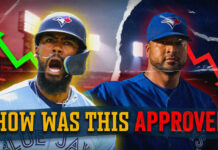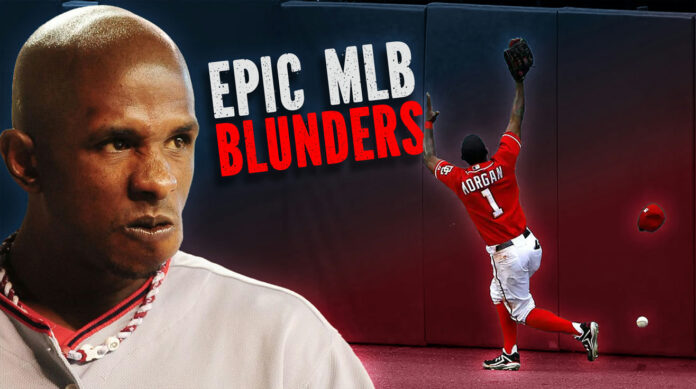
We’ve all been there—that moment when your brain goes AWOL exactly when you need it most. For baseball players, these mental vacations unfold before 40,000 witnesses and millions more at home. The game’s beautiful precision makes its rare chaos all the more delicious. Like finding a perfectly preserved fossil, these bloopers become treasured artifacts of baseball’s glorious imperfection.
In the cathedral of baseball, where the average player commits roughly 10 errors per season, certain mishaps transcend ordinary failure. They become part of the game’s folklore—moments when the physical and mental demands of America’s pastime produced comedy gold instead of highlight-reel heroics.
11. Merkle’s Cosmic Brain Freeze (1908)
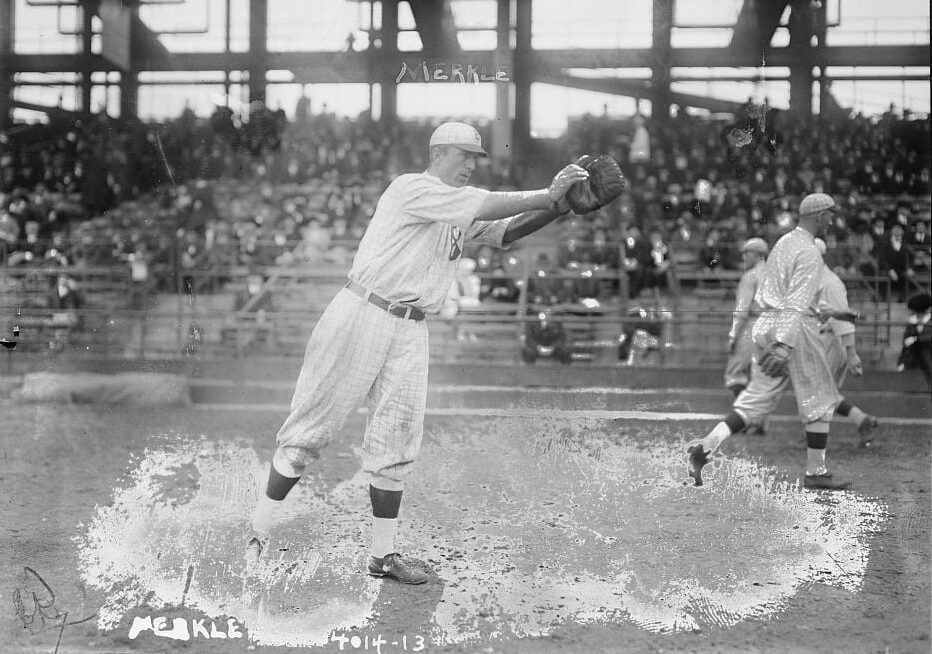
The original baseball brain cramp happened over a century ago, yet remains the gold standard against which all mental errors are measured. Fred Merkle, a 19-year-old Giants rookie, failed to touch second base on what should have been a pennant-clinching hit against the Cubs. One moment of baserunning autopilot, and suddenly the Giants’ celebration evaporated.
The Cubs successfully appealed, the game was declared a tie, and Chicago won the makeup game to steal the pennant by a single game. Though Merkle played 16 more professional seasons, baseball’s cruel memory ensured he’d forever be known for this single moment. His name became shorthand for catastrophic mental errors, proving that baseball never forgets and rarely forgives.
10. Agbayani’s Generous Gift (2000)

Mets outfielder Benny Agbayani caught a routine fly ball at Shea Stadium and immediately handed it to a young fan in the stands. Sweet gesture—except it was only the second out. The stadium’s collective gasp could’ve powered Manhattan as horror washed over Agbayani’s face. The stunned fan, realizing what happened, immediately returned the souvenir.
This wasn’t a simple counting error—it was a window into baseball’s mental taxation. Agbayani’s momentary confusion shows how even professionals sometimes short-circuit under the relentless concentration the game demands. Next time you forget where you parked at the grocery store, remember: even big leaguers lose track of the basics sometimes.
9. Sosa’s Cork Catastrophe (2003)
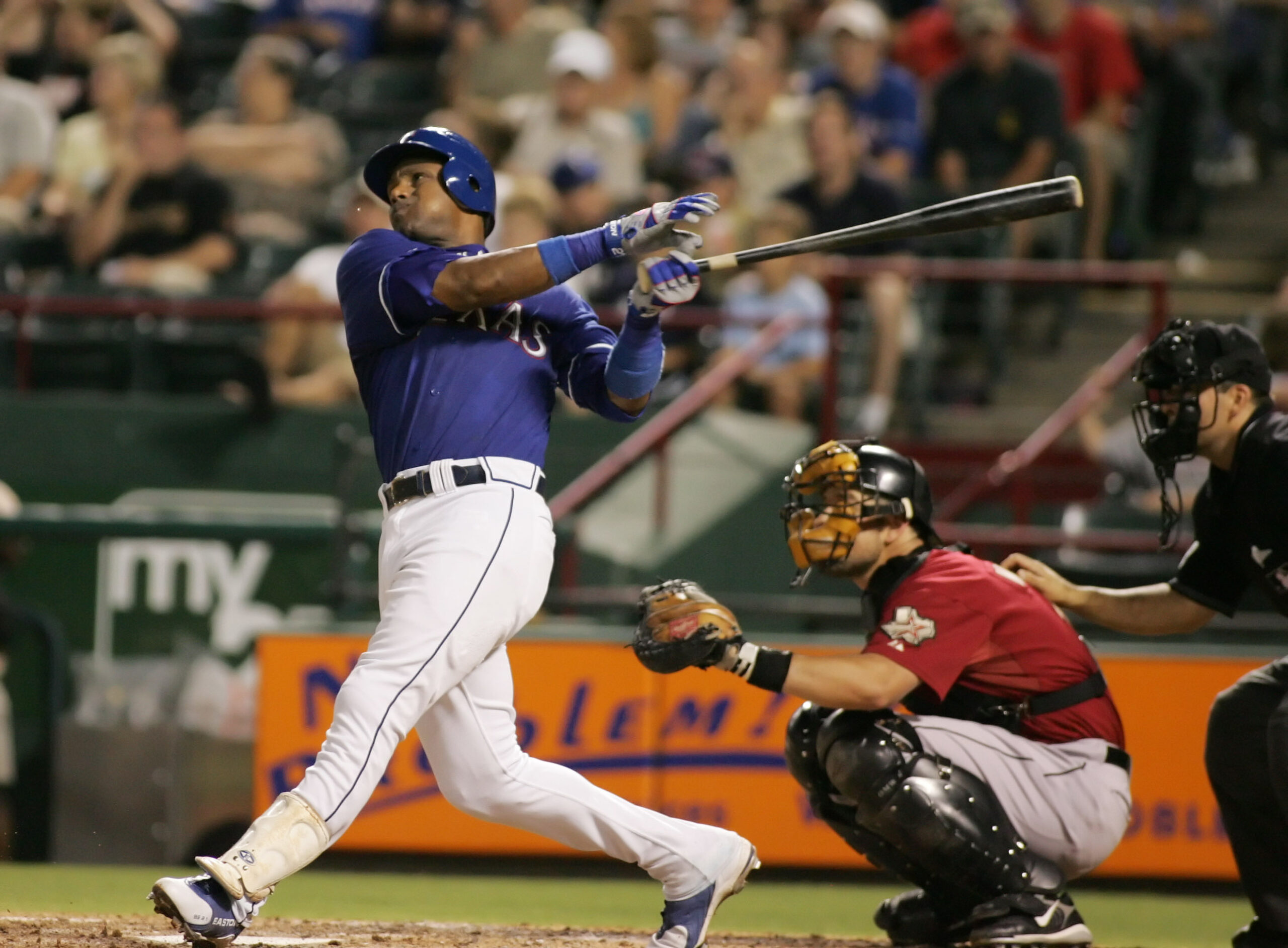
Baseball equipment fails spectacularly sometimes, but rarely with such perfect dramatic timing as Sammy Sosa’s bat during a 2003 Cubs-Devil Rays game. His lumber shattered on contact, revealing an illegal cork center that might as well have been a signed confession. The home plate umpire immediately collected the evidence while Sosa began crafting explanations.
His “wrong bat” defense—claiming he accidentally grabbed his batting practice bat—convinced approximately nobody. MLB handed down a seven-game suspension, but the real punishment was far worse. In an era already suspicious of inflated power numbers, this incident permanently tarnished Sosa’s legacy. Some mistakes can’t be fixed with a simple apology and time served.
8. Canseco’s Headed Homer (1993)

Some errors are just garden-variety mistakes. Others are so spectacularly unlikely they become immortal. Jose Canseco delivered the latter when a deep fly ball bounced perfectly off his head and over the outfield wall for a home run. This wasn’t just an error; it was performance art—a moment when baseball’s physics engine seemed to glitch.
The Rangers outfielder lost the ball against the sky before it found him rather than the other way around. Canseco could’ve sulked or raged, but instead embraced the absurdity. His good-natured response elevated this from embarrassing blooper to beloved baseball lore. Sometimes greatness comes not from perfection, but from how gracefully you handle being the punchline.
7. A-Rod’s Slap of Shame (2004)
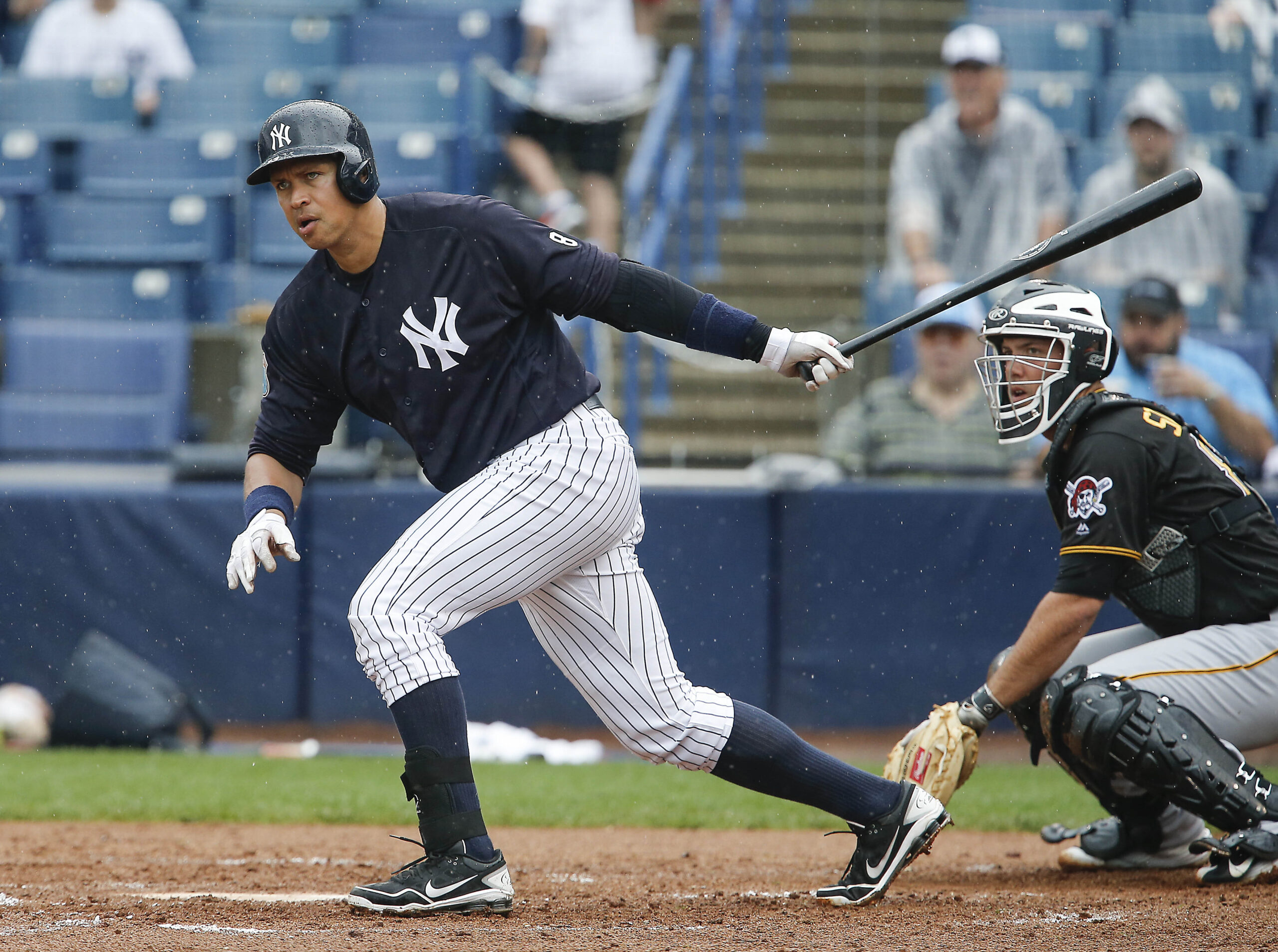
October baseball pressure makes people do strange things. For evidence, see Alex Rodriguez in Game 6 of the 2004 ALCS, desperately karate-chopping Bronson Arroyo’s glove to dislodge the ball while being tagged. It wasn’t exactly subtle. Umpires quickly ruled interference, negating a crucial Yankees run as Yankee Stadium descended into chaos.
The desperation move backfired spectacularly, helping fuel the Red Sox historic comeback from a 3-0 series deficit. Baseball’s unwritten code of conduct doesn’t explicitly forbid slapping at fielders’ gloves, mostly because nobody thought it needed saying. A-Rod’s momentary abandonment of sportsmanship became another chapter in his complicated legacy—immense talent occasionally undermined by questionable decisions.
6. Upton’s Facial Deflection (2010)
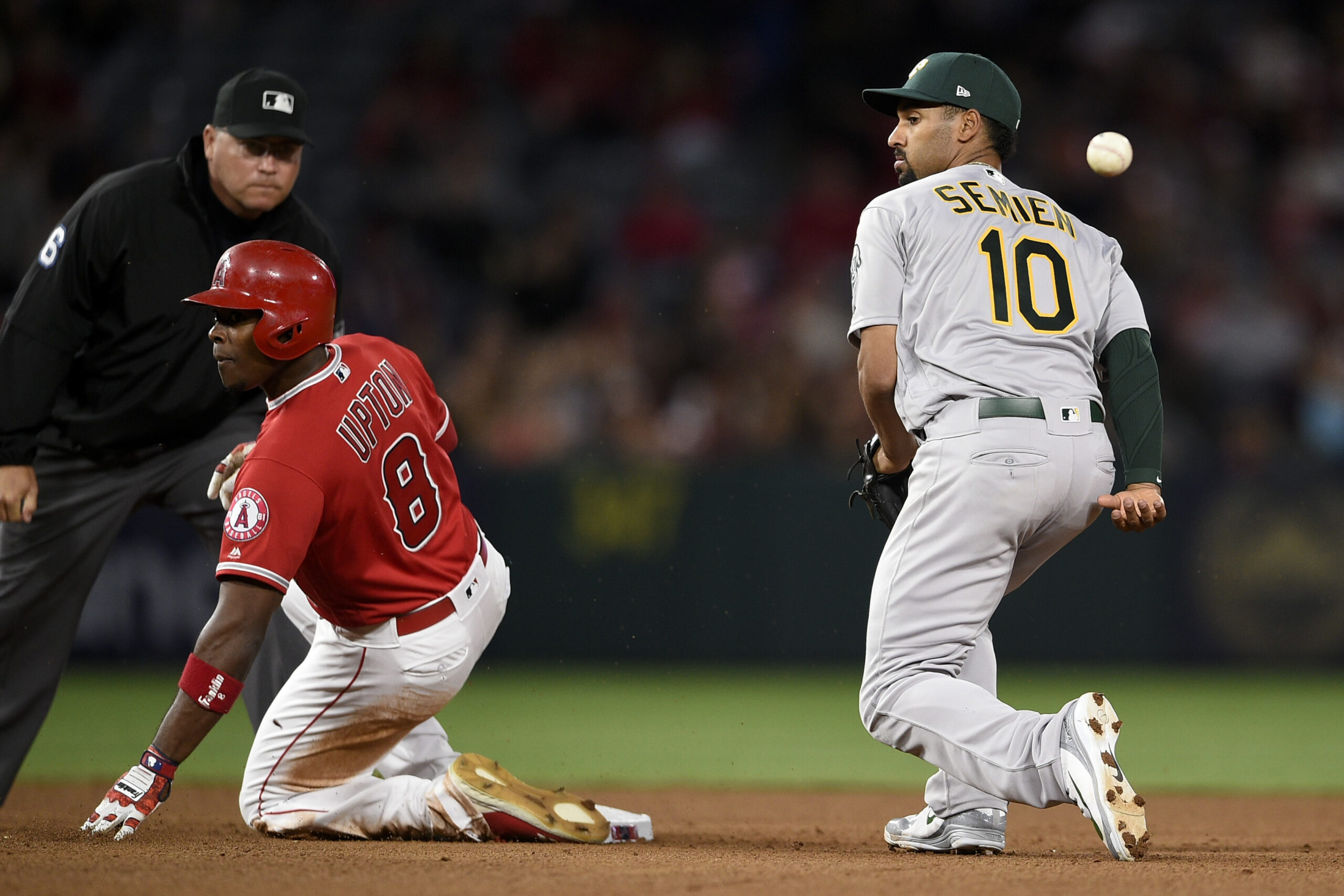
Baseball statistics track virtually everything except “balls bounced off face.” Diamondbacks outfielder Justin Upton unfortunately contributed to this rare category when a line drive struck him and ricocheted away, allowing the batter to advance. Unlike Canseco’s headed homer, this one didn’t clear the fence, but it certainly cleared the benches—with trainers rushing to check on the dazed outfielder.
The human face isn’t designed as a fielding instrument, making Upton’s inadvertent deflection all the more painful to watch. Outfielders spend countless hours practicing proper routes to the ball, hand-eye coordination, and positioning. None of that preparation involves using your facial features as backup when your glove fails. Baseball’s unpredictability means even the most skilled athletes occasionally find themselves in positions no coach would ever teach.
5. Clemens’ Bat-Flinging Fury (2000)
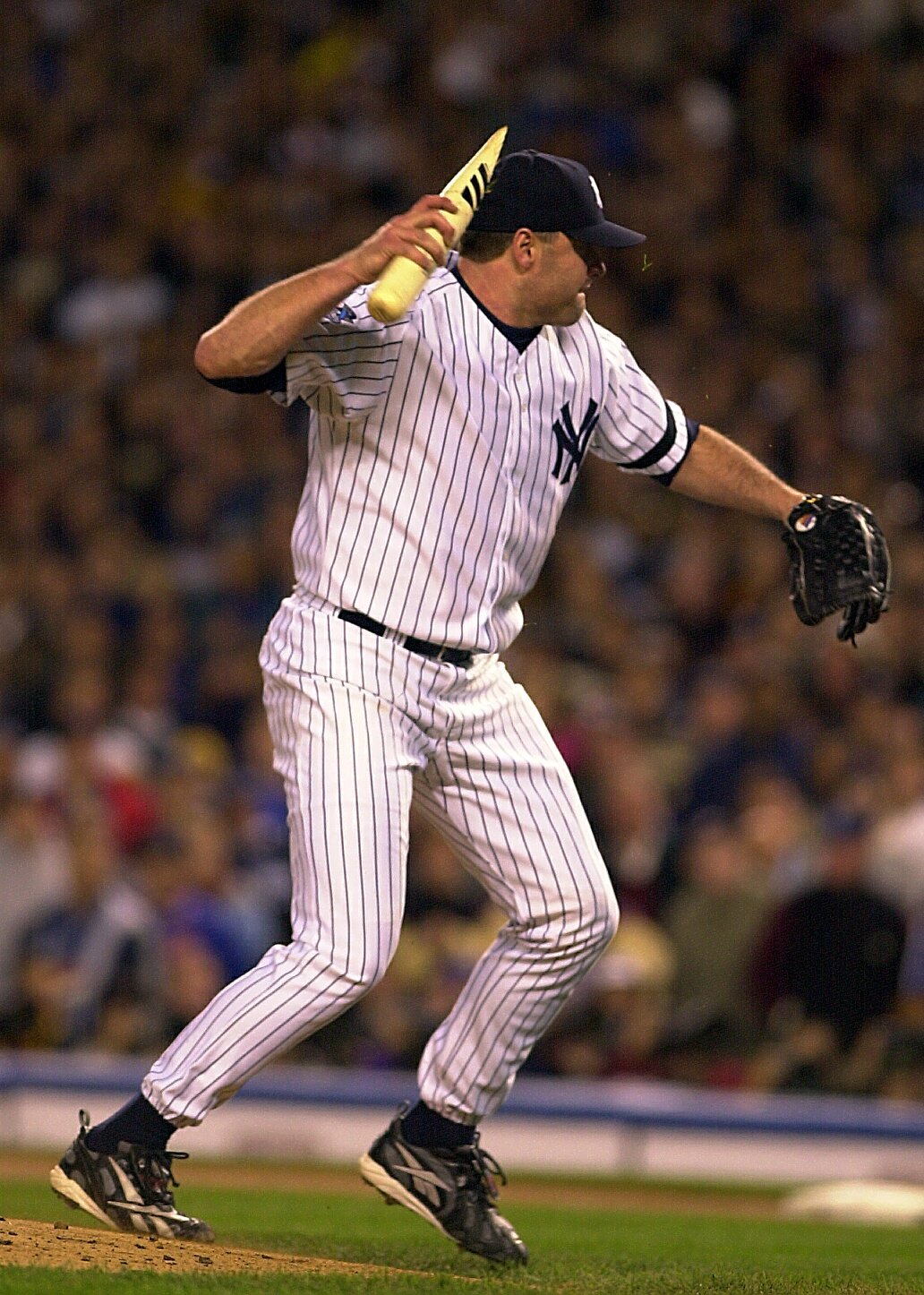
The 2000 World Series already crackled with New York tension before Roger Clemens added gasoline to the fire. When Mike Piazza’s bat shattered on contact, Clemens fielded the splintered barrel and inexplicably hurled it toward the first base line as Piazza ran past. Both benches immediately emptied as Clemens offered an explanation that convinced exactly no one.
This wasn’t just a momentary lapse but the culmination of a simmering rivalry—Clemens had previously beaned Piazza during the regular season. The Yankees eventually won the series, but this volatile moment overshadowed much of the actual baseball. Even at the sport’s highest stage, human emotions can still override professional discipline.
4. Morgan’s Phantom Catch (2010)
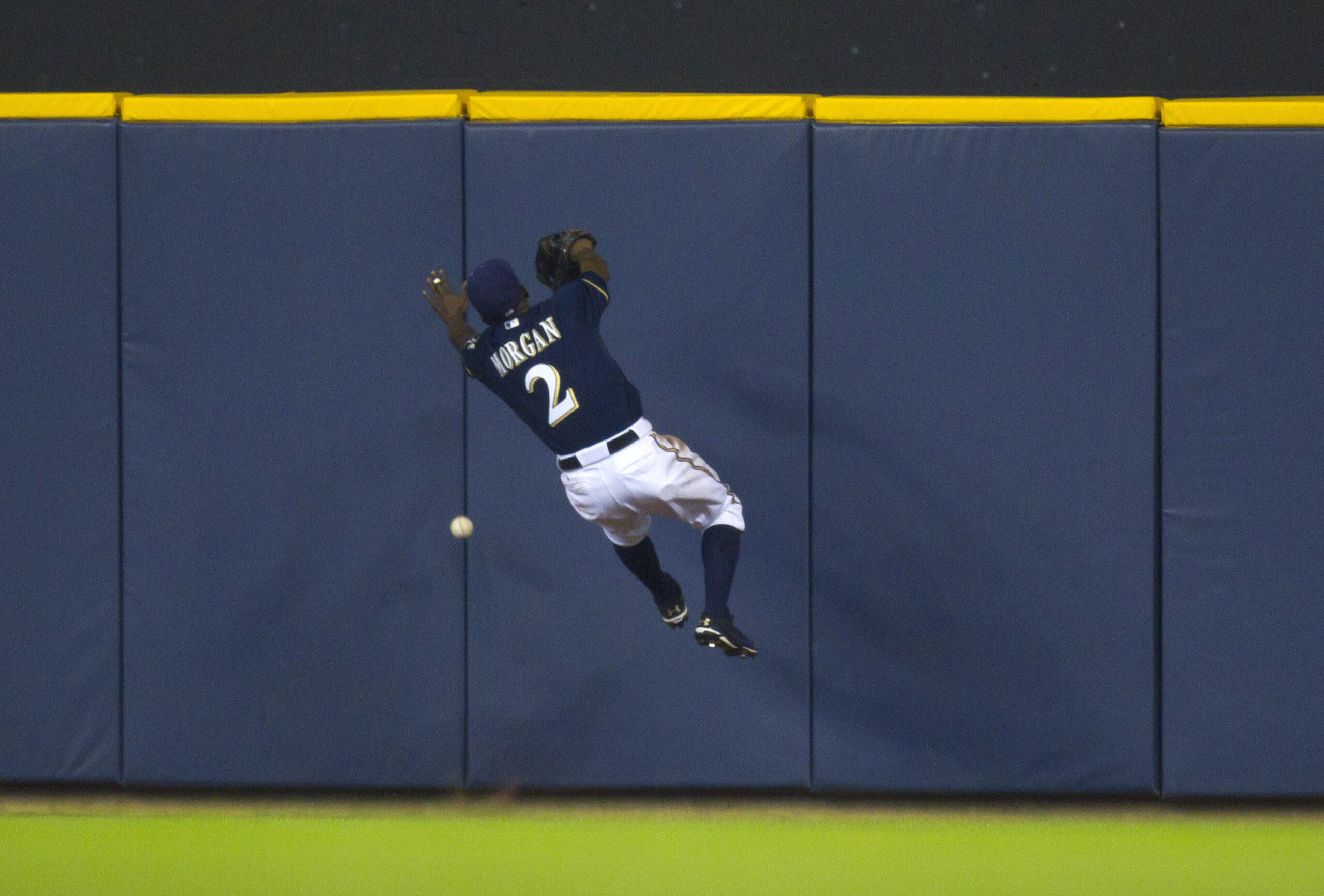
Nationals center fielder Nyjer Morgan demonstrated the dangers of premature celebration when he leaped at the wall for a catch, missed completely, then slammed his glove in frustration—all while the ball sat on the warning track. Meanwhile, Baltimore’s Adam Jones circled the bases for an inside-the-park homer as Morgan’s teammates watched in stunned disbelief.
The play defies conventional baseball logic. Even little leaguers know to secure the ball before celebrating. Morgan’s mishap serves as a vivid reminder that baseball’s fundamentals require constant vigilance. No matter how routine the play might seem, assuming success before completion is baseball’s cardinal sin.
3. Bradley’s Crowd Contribution (2009)
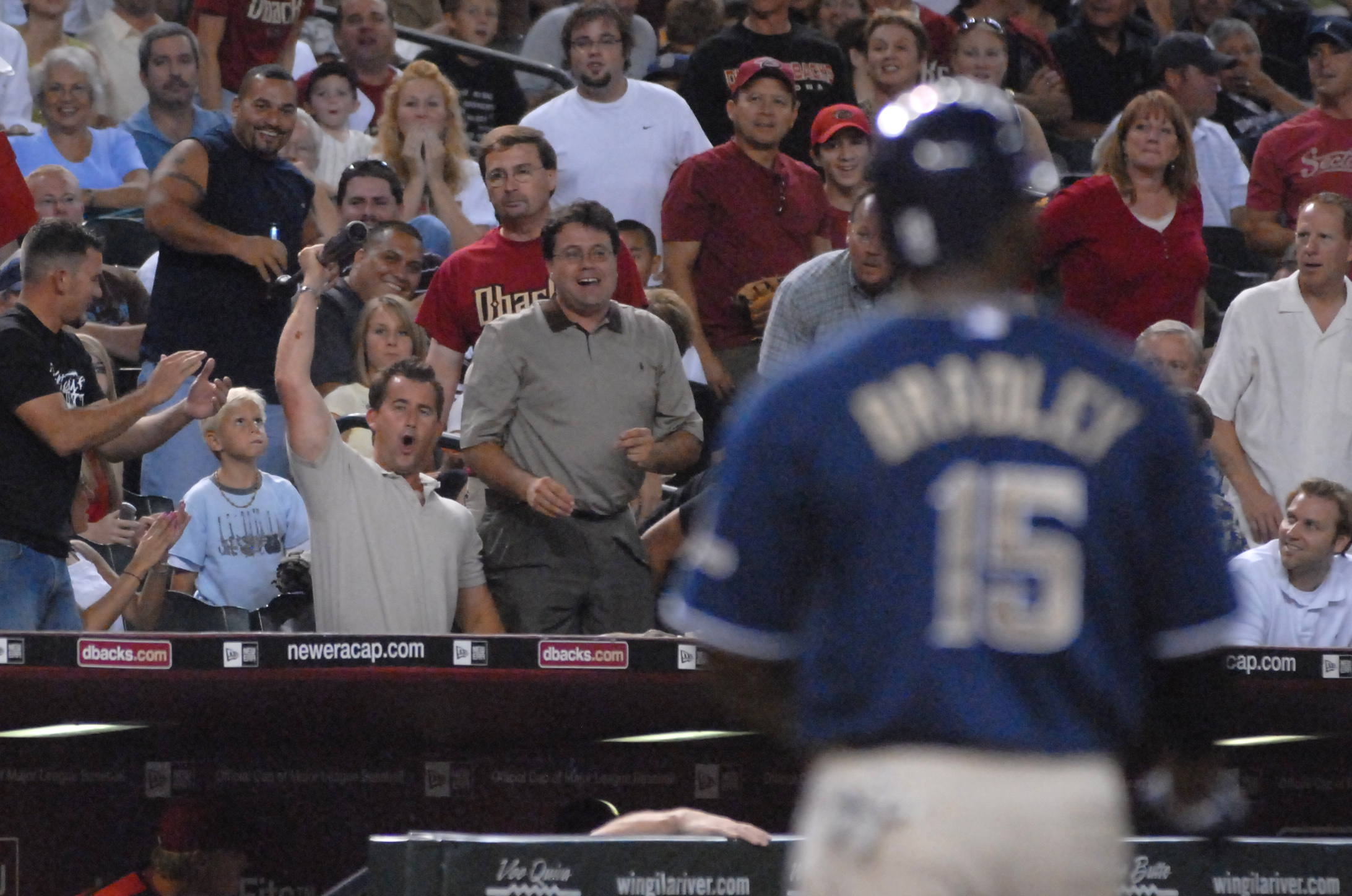
The sacred commandment of outfield play: Thou shalt know the number of outs. Cubs outfielder Milton Bradley violated this fundamental rule when he caught a fly ball, assumed it was the third out, and casually tossed the souvenir to a fan. Problem was, it was only the second out. The runner on third immediately tagged up and scored while Bradley argued fruitlessly with umpires.
This costly mental error exemplified Bradley’s troubled Cubs tenure. Baseball’s mental game demands constant situation awareness—where are the runners, how many outs, what’s the count. Bradley’s momentary disconnection from these basics provided a textbook example of how concentration lapses become scoreboard consequences.
2. Manny Being Manny (2004)
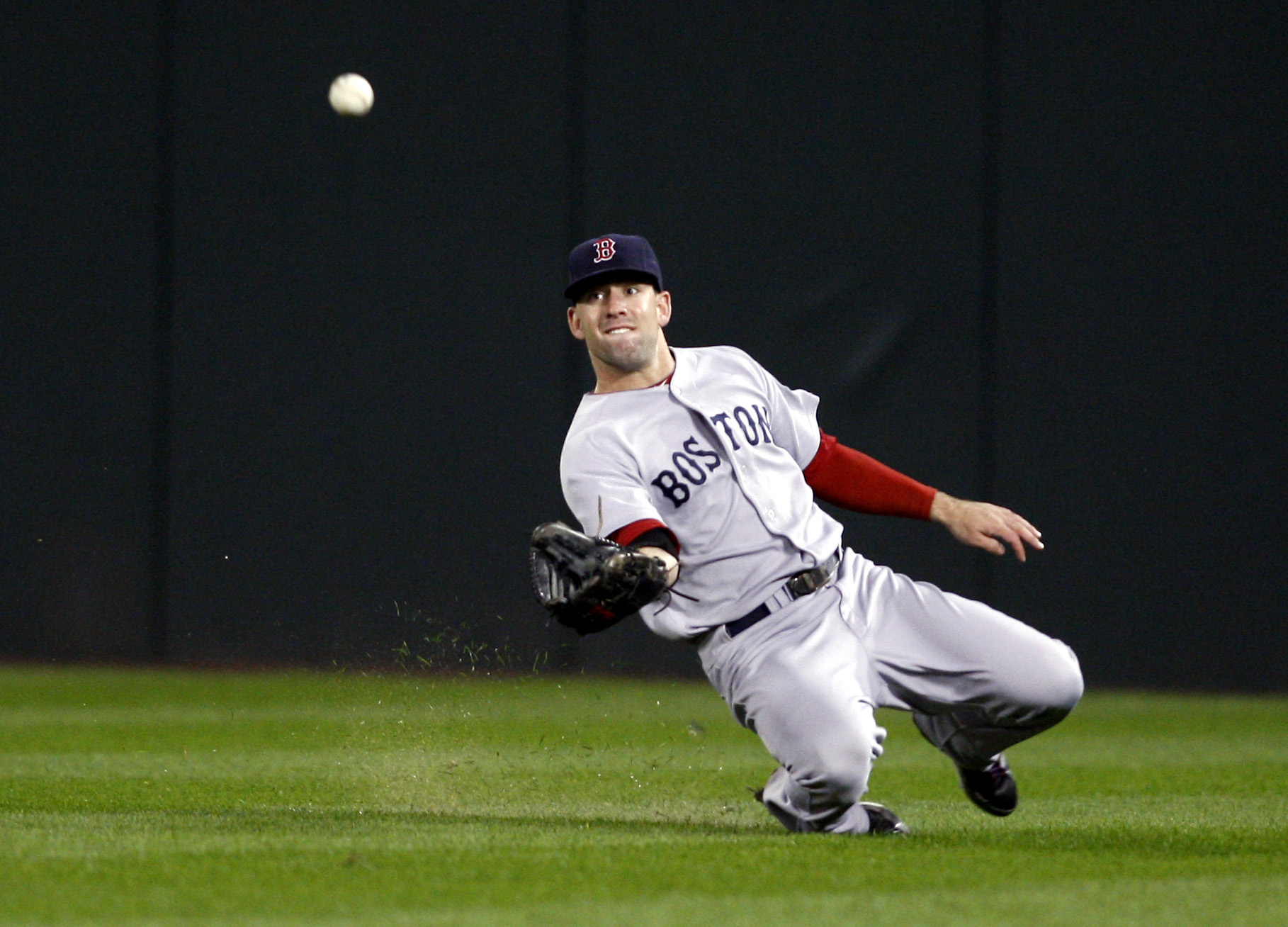
Some baseball errors result from pressure or miscalculation. Others come from whatever unique operating system was running in Manny Ramirez’s head. During a 2004 Red Sox game, Ramirez inexplicably dove to intercept a relay throw from Johnny Damon that wasn’t remotely intended for him. The play defied baseball logic, physics, and basic common sense.
“Manny Being Manny” became the perfect shorthand for Ramirez’s unconventional relationship with baseball’s rulebook. Unlike other bloopers born from mistakes, Ramirez’s errors often seemed intentional—as if he occasionally played a different game only he understood. His unorthodox approach frustrated managers but delighted fans who appreciated baseball’s rare eccentrics.
1. Weeks’ Brutal Beaning (2009)
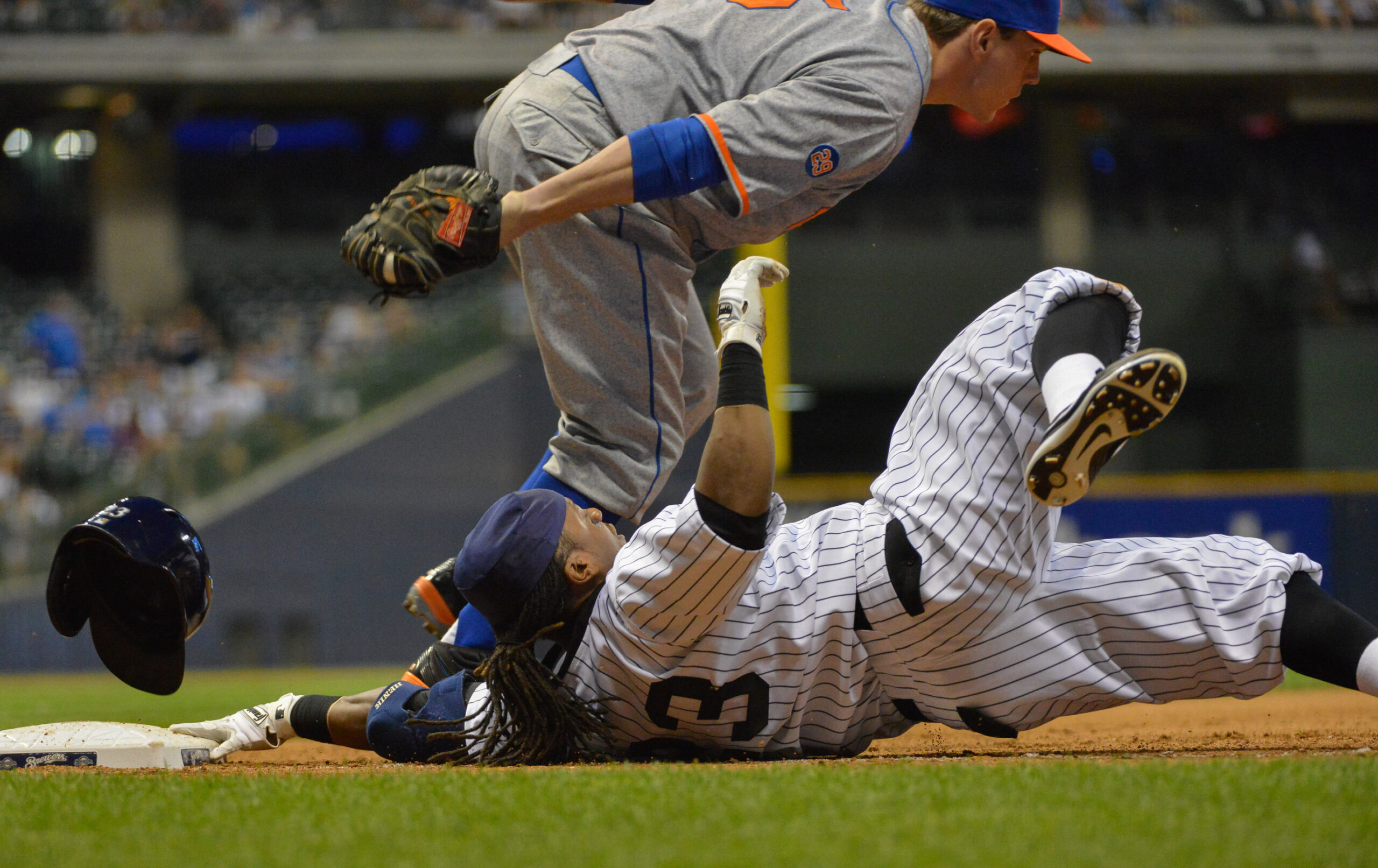
Not all baseball mishaps produce laughter. When Brewers second baseman Rickie Weeks took a 96-mph Edinson Volquez fastball directly to the face in 2009, the collective gasp from the crowd acknowledged baseball’s ever-present danger. Many players never regain confidence after such traumatic incidents. Pitches traveling near triple-digit speeds leave little reaction time when they veer off course.
Weeks demonstrated rare resilience, eventually returning to earn an All-Star selection in 2011. His comeback reminds us that while we celebrate baseball’s lighter moments, the sport demands physical courage few of us will ever comprehend. Behind every laugh-inducing blooper exists the possibility of outcomes far more serious—baseball’s perpetual high-wire act without a net.



